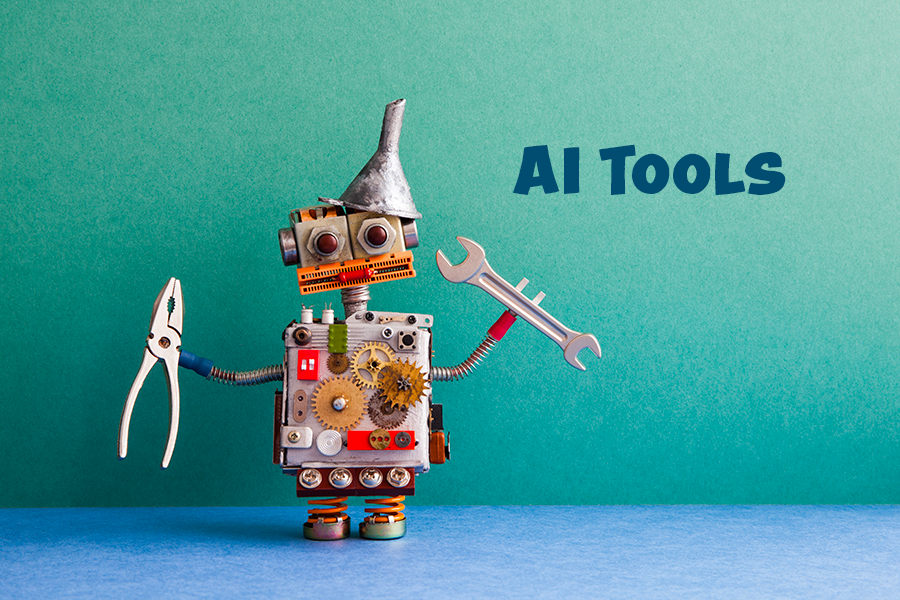Imagine you’ve captured a once-in-a-lifetime audio moment, but when you listen back, there’s an annoying hiss or unexpected distortion. You know how frustrating it can be to have your audio ruined by technical glitches.
That’s where the right AI tool for audio repair comes in, saving your precious recordings from being lost to noise forever. You’ll discover the best AI tool for audio repair and uncover seven secrets that will transform how you handle audio mishaps.
These insights are designed to empower you, giving you the confidence to restore audio like a pro. Curious about what these secrets are? Keep reading, and you’ll unlock the key to pristine sound quality.
Table of Contents
ToggleImportance of Audio Repair

Credit: www.amazon.com
Audio repair is crucial for high-quality sound production. It ensures clarity and eliminates distractions. Poor audio can ruin an experience. Whether in podcasts, films, or music, sound is key.
Background noise or distortion affects the listener’s focus. Clean audio keeps the audience engaged. With the right tools, audio repair becomes efficient and effective.
Understanding Audio Imperfections
Audio often captures unwanted elements. Hiss, pops, or clicks can be distracting. These imperfections reduce the quality of sound. Addressing them is vital for professional results.
The Role of Audio Repair Tools
Repair tools transform flawed recordings. They enhance and restore sound quality. These tools offer solutions for common audio issues. Selecting the right tool is essential for optimal results.
Impact on Listener Experience
Clean audio improves listener satisfaction. It conveys messages clearly without disruptions. Listeners appreciate high-quality sound. It shows professionalism and attention to detail.
Preserving Audio Integrity
Repairing audio maintains its original intent. It retains the creator’s vision. The process ensures that content remains authentic. This is important for both creators and audiences.
Enhancing Content Value
Refined audio adds value to content. It elevates the production’s overall quality. Enhanced sound makes content more appealing. This increases its potential reach and impact.

Credit: www.elegantthemes.com
Key Features to Look For
When choosing the best AI tool for audio repair, understanding the key features is crucial. You want a tool that tackles common audio problems with precision and ease. Let’s dive into the essential features that can make or break your audio repair experience.
Noise Reduction
Noise reduction is a must-have feature for any audio repair tool. Imagine you’re recording a podcast at home, and your neighbor decides to mow the lawn. You need a tool that can easily remove that unwanted background noise, leaving your voice clear and focused. Look for tools with adjustable noise reduction settings, so you can tailor them to your specific needs.
Reverb Removal
Reverb can be a tricky issue, especially if you’re recording in a less-than-perfect space. An effective audio repair tool should help you eliminate excess reverb, ensuring your sound is clean and professional. Think of it as having a virtual sound engineer who instantly transforms your bathroom recording into a studio-quality masterpiece. Consider tools that offer real-time processing to save you time.
Frequency Analysis
Frequency analysis allows you to understand the spectrum of your audio file. This feature helps you pinpoint specific issues like hums or pops that might be hiding in the mix. It’s like having an audio magnifying glass that reveals exactly where improvements can be made. Choose a tool that provides a visual representation of frequencies so you can easily identify and address problem areas.
As you explore these features, ask yourself: What specific problems am I facing with my audio? The right tool should feel like an extension of your creative process, enhancing your work rather than complicating it.
Top Ai Tools for Audio Repair
In the quest for perfect sound, audio repair tools powered by AI have become essential companions for musicians, podcasters, and audio engineers. These tools work like magic, cleaning up audio imperfections and enhancing the listening experience. Whether you’re dealing with background noise or muffled voices, the right AI tool can make all the difference.
Tool A: Features and Benefits
Tool A stands out for its intuitive interface that even beginners can navigate with ease. It offers real-time noise reduction, allowing you to clean up audio without waiting for lengthy processing times. The tool’s automatic equalization feature balances audio levels, ensuring consistent sound quality across your recordings.
Imagine you’re editing a podcast episode, and an unexpected hum ruins a key interview. With Tool A, you can swiftly remove that hum, saving both time and your audience’s ears. Its user-friendly design and quick processing mean you don’t need to be an audio expert to achieve professional results.
Tool B: Features and Benefits
Tool B excels in handling complex audio issues, such as distortion and clipping. Its advanced algorithms analyze audio files meticulously, restoring clarity and depth to damaged recordings. This tool also supports batch processing, which is a lifesaver when you have multiple files to repair.
Picture yourself working on a live concert recording with several tracks suffering from distortion. Tool B can process these files simultaneously, freeing you to focus on other tasks. Its precision ensures your audience hears the music as it was meant to be heard, without distractions.
Tool C: Features and Benefits
Tool C is renowned for its versatility, supporting a wide range of audio formats. Its spectral editing feature allows you to visualize sound frequencies, making it easier to pinpoint and address specific issues. Additionally, this tool’s AI-driven recommendations guide you in selecting the best repair options for your audio.
Consider a scenario where you’re restoring an old family recording filled with static and pops. Tool C not only cleans up the audio but also suggests enhancements to improve overall quality. This guidance can be invaluable, especially if you’re new to audio repair.
Choosing the right AI tool for audio repair can transform your projects, elevating them from good to exceptional. What audio challenges are you facing that these tools might solve? Let these insights guide you in making the best choice for your needs.
User-friendly Interfaces
When selecting an AI tool for audio repair, the interface is crucial. A user-friendly design makes the process smoother and more efficient. It helps users of all skill levels navigate complex features easily.
Ease of Use
Ease of use is key in audio repair tools. The best AI tools offer clear menus and labels. Simple layouts reduce confusion and save time. Users can focus on fixing audio, not figuring out the software.
Many tools provide tutorials or guides. These support users in learning the software quickly. Helpful tips within the interface enhance the user experience.
Intuitive Controls
Intuitive controls make audio repair seamless. Tools with straightforward navigation are preferred. Users can access essential features without digging deep into menus.
Visual elements like sliders and buttons simplify complex tasks. They allow users to adjust settings with precision. Controls designed with logic and flow in mind prevent frustration.
Responsive controls are important. They let users make changes and see results instantly. This immediate feedback aids in refining audio quality efficiently.
Advanced Algorithms
Advanced algorithms have reshaped audio repair tools. These tools now fix sound issues with precision. They analyze audio patterns deeply. This ensures the best quality possible. Understanding these algorithms reveals their powerful capabilities.
Machine Learning in Audio Repair
Machine learning plays a key role in audio repair. It studies patterns in sound data. Then, it predicts how to fix them. This method improves accuracy in noise reduction. It also enhances clarity in audio restoration.
These algorithms learn from vast audio samples. They adapt to different sound issues quickly. This flexibility helps in repairing varied audio problems. Continuous learning ensures better results every time.
Ai-driven Enhancements
AI-driven enhancements refine audio quality. They focus on removing unwanted noise. This improves the overall listening experience. AI identifies and isolates sound elements. It then cleans them effectively.
The enhancements also balance audio frequencies. This creates a harmonious sound output. Such improvements make audio repairs more reliable. They ensure listeners enjoy crisp and clear sound.

Credit: medium.com
Integration with Other Software
Integration with other software enhances the capabilities of AI tools for audio repair. It allows users to utilize various applications together for better results. This section reveals secrets about software integration, ensuring optimal performance and efficiency.
Compatibility Issues
Compatibility is crucial for smooth integration with other software. Some AI tools may not work well with certain applications. This can cause problems and slow down the workflow. Always check compatibility before using an AI tool with other software.
Different software may require specific settings to function properly. Understanding these requirements helps avoid issues. Make sure the AI tool supports the formats and protocols of your other software. This ensures a hassle-free experience.
Seamless Workflow
A seamless workflow is possible with proper integration. AI tools for audio repair can work alongside other software without interruptions. This saves time and improves productivity.
Efficient integration allows users to switch between applications easily. It reduces the need for manual adjustments. With seamless workflow, tasks become simpler and quicker.
Integrating AI tools can enhance audio repair processes. It provides better control and flexibility. Users can achieve high-quality audio outputs with minimal effort.
Cost and Accessibility
Choosing the best AI tool for audio repair involves understanding cost and accessibility. These factors significantly impact your decision-making process. Knowing the pricing models and free versus paid options helps in making informed choices. Let’s explore these aspects to find the right fit for your needs.
Pricing Models
Audio repair tools offer diverse pricing models. Subscription-based plans are popular. Monthly or yearly payments are common. Some tools provide one-time purchase options. This gives you lifetime access. Analyze what suits your budget best. Consider long-term use and financial commitment. Evaluate features included in each model. Sometimes, higher costs mean better features.
Free Vs. Paid Options
Free tools can be tempting. They offer basic functions without cost. Ideal for beginners and simple tasks. Yet, paid options might offer advanced features. Better sound quality and more tools. Paid versions often include customer support. This is helpful for troubleshooting issues. Consider what you need from the tool. Free might suffice for small projects. Larger tasks might require investment in paid tools.
Real-world Applications
Real-world applications of AI audio repair tools reveal seven crucial secrets. These tools enhance sound quality by removing noise and fixing audio glitches efficiently. Their ability to restore clarity in recordings makes them indispensable for professionals.
Imagine you’re listening to your favorite podcast or tuning into a live radio broadcast. Suddenly, static noise creeps in or voices become muffled. What if you had a tool that could seamlessly clean up these audio issues in real time? This is where advanced AI audio repair tools come into play, offering solutions to common audio problems across various fields. Let’s delve into some real-world applications where these tools shine. ###
Broadcasting
Broadcasting demands top-notch audio quality. Whether it’s a live news segment or a sports commentary, audio clarity keeps the audience engaged. AI tools can remove unwanted noise, enhance voice clarity, and ensure consistent sound levels. Imagine being a radio host who’s just received an urgent call from a noisy location. With a few clicks, you could eliminate background distractions, ensuring your listeners hear only what matters. Isn’t that the kind of control you want over your broadcasts? ###
Podcasting
Podcasters know that clear audio makes or breaks an episode. Listeners won’t stick around if they can’t hear the conversation over background hums or echoes. AI-driven audio repair tools help podcasters produce crisp, professional-quality audio. Consider a scenario where you’ve just completed an interview with a high-profile guest, only to discover unwanted noise in the recording. With AI tools, you can quickly clean up the audio, delivering a polished episode to your eager audience. Wouldn’t it be a relief to have such a safety net? ###
Music Production
In music production, every note and beat counts. Unwanted noise or inconsistent sound levels can ruin a track. AI audio tools assist producers in refining tracks by removing imperfections and balancing audio levels. Picture yourself mixing a new song, only to find a faint hiss in the background. Instead of spending hours manually editing, you can use AI to swiftly correct the issue. Isn’t that the efficiency every music producer dreams of? These real-world applications of AI audio repair tools demonstrate their potential to transform your audio projects. Whether you’re broadcasting live, recording a podcast, or producing music, the right tool can make all the difference. What challenges have you faced in your audio endeavors, and how could AI tools help you overcome them?
Frequently Asked Questions
What Is the Best Audio Ai?
OpenAI’s Whisper, Google’s AudioLM, and Descript’s Overdub are top audio AI tools. They excel in transcription, audio synthesis, and voice cloning. Choose based on your specific needs for best results.
How to Fix Bad Audio in Ai?
Enhance bad audio using AI by adjusting EQ settings and reducing background noise. Use audio editing software for better clarity. Consider re-recording with quality microphones to improve sound quality. Regularly update AI tools to access improved audio enhancement features.
Which Is the Best Ai Platform Now?
OpenAI’s ChatGPT is currently a leading AI platform. It excels in natural language processing and diverse applications. Users appreciate its versatility and ease of integration. Many businesses rely on its capabilities for customer support and content creation. Its continuous updates ensure cutting-edge performance in AI technology.
Who Is the Best Ai System?
The best AI system varies based on needs. OpenAI’s GPT-4 excels in language processing. Google’s Bard is strong in search integration. Each has unique strengths. Consider your requirements to choose the best fit.
Conclusion
Discovering the right AI tool for audio repair can be transformative. These tools enhance sound quality with ease. They remove unwanted noise, ensuring clear audio output. Choosing wisely saves time and delivers professional results. Explore features to find the perfect match for your needs.
Don’t overlook user-friendly interfaces for seamless use. Test different options to identify your favorite. Clear audio can elevate any project, making it sound polished and professional. Stay informed on updates to maximize benefits. With the right tool, your audio will shine, impressing listeners every time.




